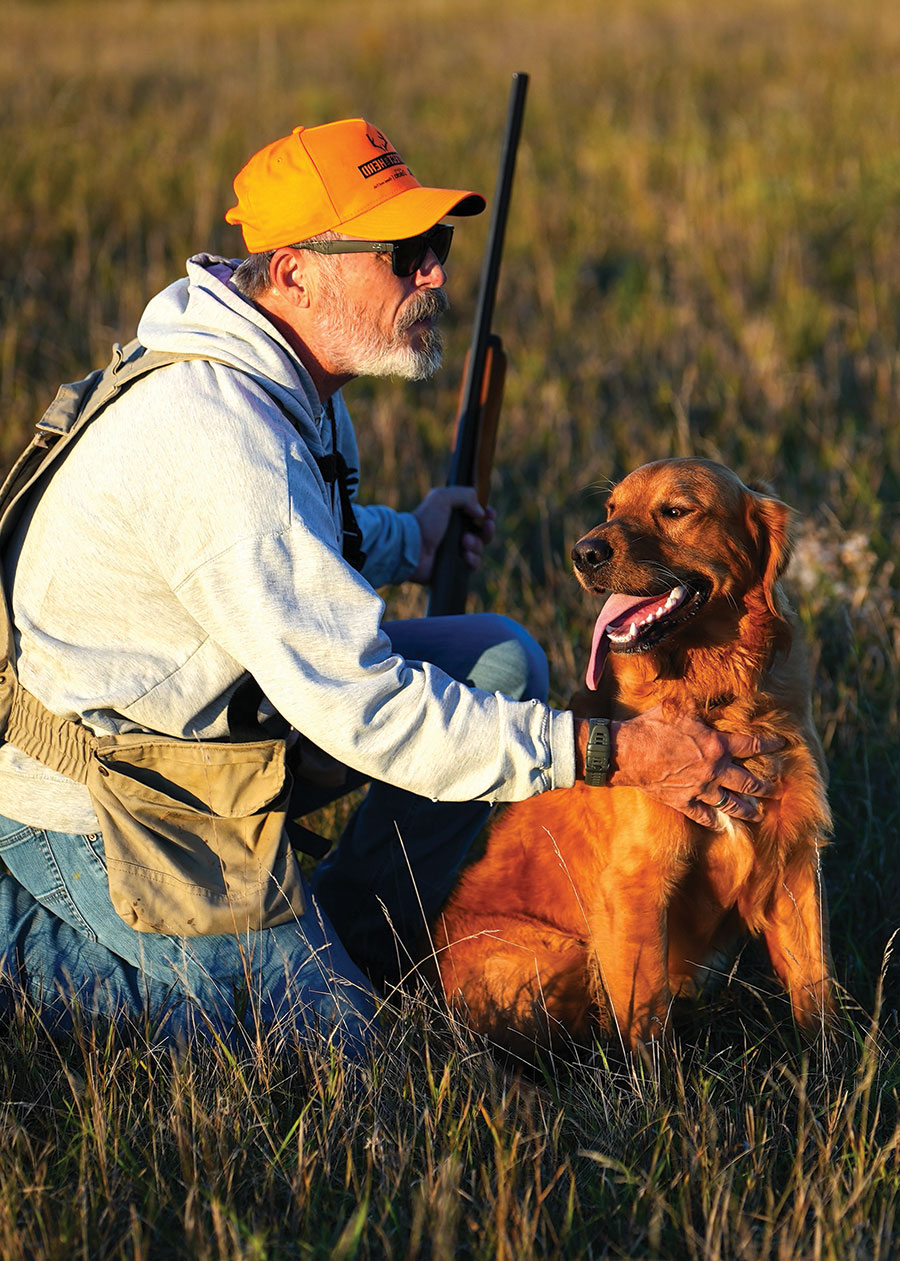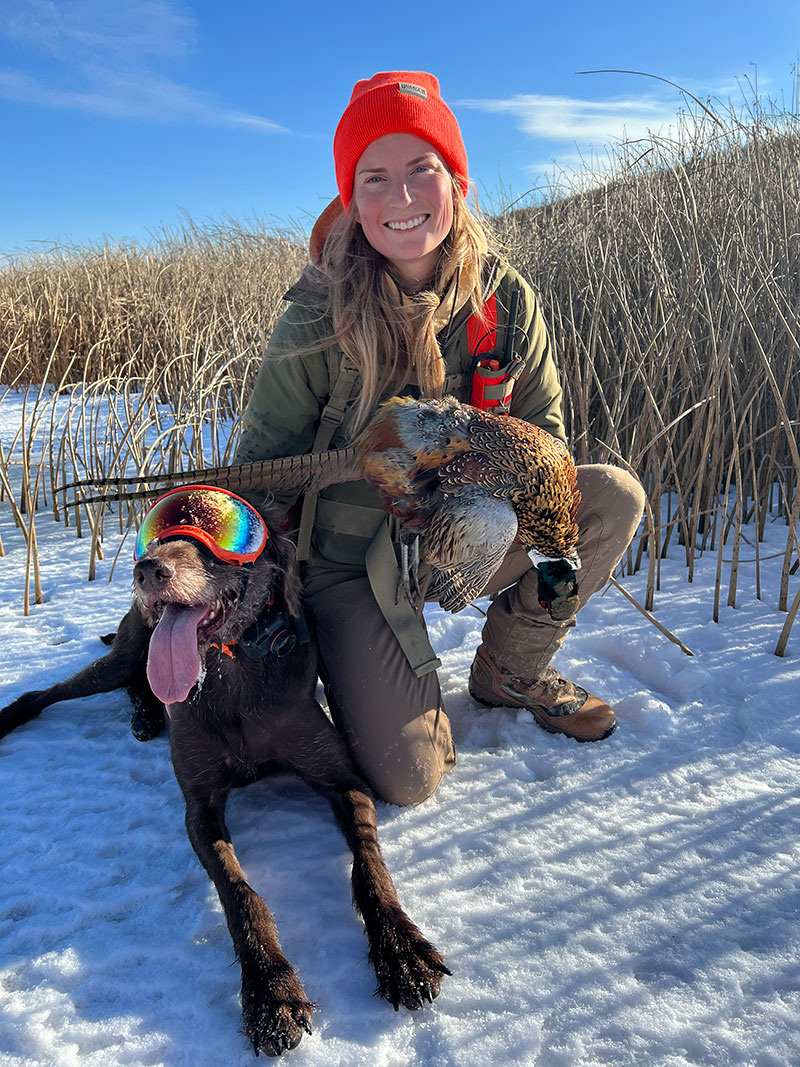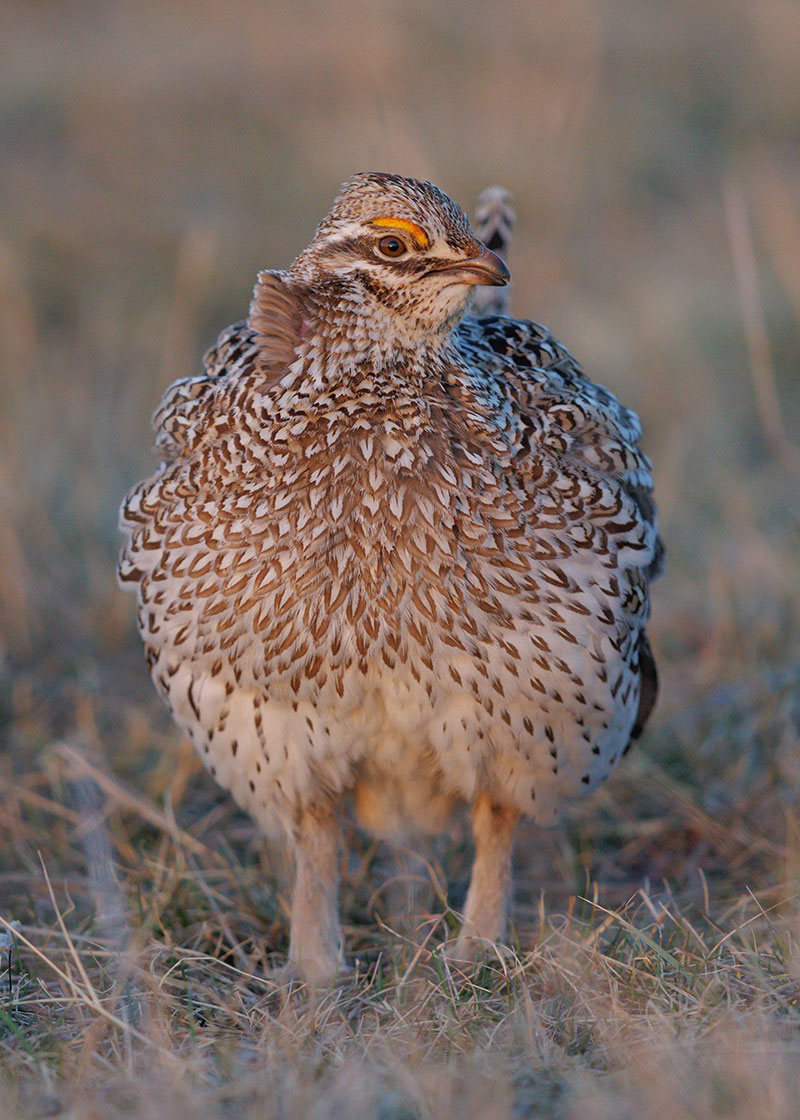The Birds We Favor
Cayla Bendel and Ron Wilson

An Ode to Pheasants
by Cayla Bendel
When I moved to North Dakota in 2017, for a job with none other than Pheasants Forever, I had just one pheasant to my name, and not much of an affinity for the notoriously colored, nonnative bird. I’d always kind of associated pheasant hunting as a rich man’s sport. Waterfowl and archery hunting had my heart at the time.
But I hadn’t yet set foot on this vast North Dakota landscape. My heartbeat hadn’t yet been frozen (nor my eyelashes) from that moment between point and flush on a late-season day in the cattails.
And I hadn’t yet felt the way I do when feathers hit hand, begrudgingly gifted from the clutches of my beloved Finners.
New to North Dakota, the workforce, pointing dogs, wing shooting, the uplands, marriage and eventually motherhood, pheasants found their way into my life not because of a profound admiration for long tails or red and green hues, although that came, but because of the formative years I got to spend hunting them.
Regardless of how it started, you can now find me right there with the rest of the rooster connoisseurs, touting that they’re smarter than they look, that trudging through cattails in December builds character, and that their signature flush and cackle is unmatched for excitement among game birds.
But if I had to boil it down, I think for me, an ode to pheasants, is really an ode to Fins.
If dogs could talk, there’s no doubt in my mind that chasing pheasants in December would be his self-proclaimed favorite.
I’ve had the privilege to hunt with some die-hard upland hunters and bird dog junkies who have commented on his ability to hunt late-season pheasants, specifically to locate roosters in an endless sea of cattails. I just smile big and agree, accepting none of the credit. I think Fins was just born for this specific life, in this moment of ours.

Cayla Bendel with hunting dog Fins
It’s nothing short of impressive to watch Fins tremble on point for the often several minutes it takes me to navigate to whatever tangled mess of cattails and deadfall he’s pinned a cagey rooster in.
You too would have a newfound respect for ditch parrots if you could watch Fins track a specific bird for over 500 yards that has slyly circled back behind us. While impressive, these late-season birds that have seemingly seen it all are no match for Fins.
While these hardy birds are feathered from head to toe to help them survive during North Dakota’s leanest months, I favor them in early fall when Mother Nature is at her best. Those days when a flannel shirt is plenty in the morning but shed not long after that. Those days that we fantasize about equally in summer and winter when we surrender indoors to the heat, humidity and cold.
It also doesn’t go unappreciated that the grouse are their most civil in early fall. They often hold tighter than we deserve and frequently flush individually rather than collectively, providing a fair shake to the hunter (me) who often has little to brag about once the smoke clears.
I understand this early season conduct has much to do with the coveys being made up of young, first-year birds not yet hip to the program. But that will change. By season’s end, or maybe just a month or more removed from the opener depending on the hunting pressure, they’re just as likely to flush well out of shotgun range when you’re in the field or simply wing it to the next quarter-section when you shut the door on your pickup.
No matter, I will still make my way into the field and hunt. Similar to pheasant and partridge hunters, I would guess, we hunt with the hope — fingers crossed — that not all the birds flushed wild, that there might just be a straggler or two because we’ve seen it play out that way before.
Plus, much of the beauty of hunting sharp-tailed grouse is the prairie playing field. The hiking is easy enough and my hunting partners and I know full well there is no need to bust through the cattail-ringed wetlands because it’s habitat the grouse ignore. Instead, we stick to the rolling terrain, making sure to hit hilltop flat spots where we know the sharptails dance in spring and loaf during the hunting season.
And if it’s hot, and our flannel shirts are off, stuffed into game bags with a dead grouse or two, or tied around our waists, we hit the buffaloberry patches where the berries are as red as lipstick and the tangle of branches offer cool shade for the birds.
While there are times it all comes together, and we find birds and shoot relatively straight. There are those hunts we don’t figure things right and never shoulder our shotguns, which isn’t the end of the world because it’s often difficult to beat the view.
RON WILSON is editor of North Dakota OUTDOORS.

